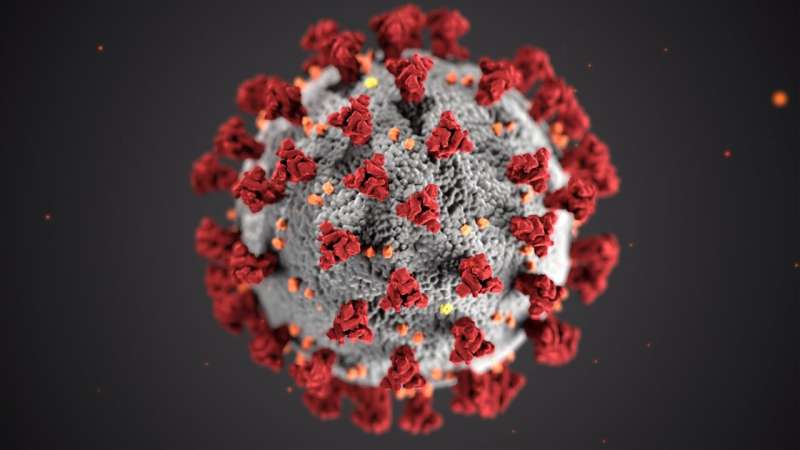This article has been reviewed according to Science X's editorial process and policies. Editors have highlighted the following attributes while ensuring the content's credibility:
fact-checked
peer-reviewed publication
trusted source
proofread
Preclinical data suggest antioxidant strategy to address mitochondrial dysfunction caused by SARS-CoV-2 virus

Building upon groundbreaking research demonstrating how the SARS-CoV-2 virus disrupts mitochondrial function in multiple organs, researchers from Children's Hospital of Philadelphia (CHOP) demonstrated that mitochondrially-targeted antioxidants could reduce the effects of the virus while avoiding viral gene mutation resistance, a strategy that may be useful for treating other viruses.
The preclinical findings were published in the journal Proceedings of the National Academy of Sciences.
Last year, a multi-institutional consortium of researchers found that the genes of the mitochondria, the energy producers of our cells, can be negatively impacted by the virus, leading to dysfunction in multiple organs beyond the lungs.
SARS-CoV-2 proteins can bind to mitochondrial proteins in host cells as well as inhibit the expression of mitochondrial genes. While the virus that causes COVID-19 initially targets the lungs, eventually it can impact other organs, particularly the heart, and while the lungs may recover, mitochondrial function can remain suppressed in the heart and other visceral organs.
SARS-COV-2 infection disrupts mitochondrial oxidative phosphorylation (OXPHOS), the key process by which mitochondria generate cellular energy. This increases mitochondrial reactive oxygen species (mROS) which in turn activates hypoxia inducible factor-1alpha (HIF-1α).
This causes the process to switch from burning carbohydrates and fats by OXPHOS for energy production to glycolysis which produces materials for viral production. The increased mROS also damages the mitochondrial DNA (mtDNA) which is released into the cytosol to activate the inflammatory systems, also affecting the organs.
"We suspected that we may be able to disrupt SARS-CoV-2's ability to cause disease by reducing the amount of mROS, thus blocking the metabolic shift important for viral synthesis," said the study's first author Joseph W. Guarnieri, Ph.D., a postdoctoral fellow in the Wallace lab at the Center for Mitochondrial and Epigenomic Medicine (CMEM) at CHOP.
"Since the key signal induced by the virus to drive the shift from energy production to viral substrate production is mROS, our next step was to determine if inhibiting mROS production could impair viral production and pathology."
To test this hypothesis, researchers employed a mouse model expressing human ACE2 gene which permits SARS-CoV-2 cell infection. When treated with an antioxidant enzyme, mitochondrially targeted catalase or the mitochondrially-targeted catalytic antioxidant compound EUK8, the negative effects of viral infection such as weight loss, clinical severity and circulating levels of mtDNA, were all reduced, in association with increased lung OXPHOS, and reduced lung levels of HIF-1α, viral proteins and inflammatory cytokines.
"We believe that reducing mROS represents a superior strategy for mitigating the pathogenicity of SARS-CoV-2," said senior study author Douglas C. Wallace, Ph.D., director of the CMEM at CHOP. "The virus is constantly mutating its 'S' protein gene to evade immunity induced by current anti-S vaccines. By modulating cmROS levels, we are rendering the host cell unfavorable for viral life cycle which the virus cannot change."
More information: Wallace, Douglas C., Mitochondrial antioxidants abate SARS-COV-2 pathology in mice, Proceedings of the National Academy of Sciences (2024). DOI: 10.1073/pnas.2321972121


















